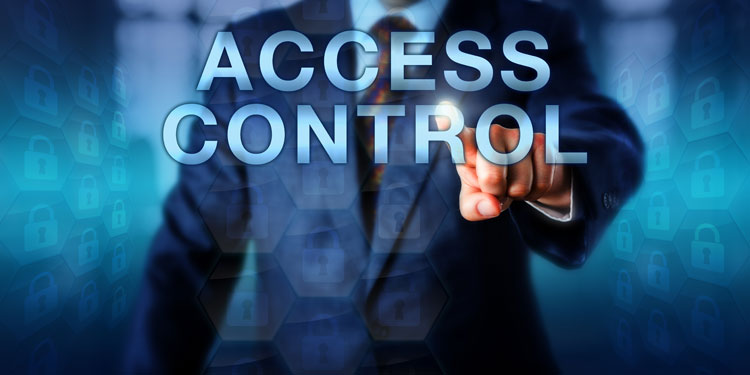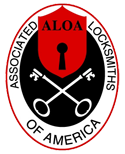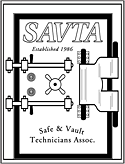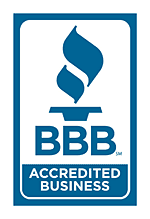Credential Based Systems

Electronic Access Control has undergone dramatic change since its early adoption in the mid 1970s. Today credential based systems with keys, cards, tokens or even transmitter are considered state of the art and worth the price of admission or not as the case may be. The good news is that you can benefit from this change. This article deals with the underlying technologies available from your existing suppliers.
What is Access Control? - Access Control systems consist of doors, gates or portals, that are normally operated by mechanical, pneumatic, hydraulic or electromechanical hardware. The process is controlled by credential, knowledge, or some unique biological characteristic. Your knowledge of these fine products means you will definitely stay ahead of the curve and keep your family and customers safe.
What Are Credential Based Security Systems? - Credential based systems use keys, cards, tokens, or transmitters. This market segment has seen rapid development in the last few years. Knowledge based systems use something known very similar to a password or PIN number. Biometrics currently include voice, hand or finger print, retina or iris scan, signature dynamics, facial recognition, hand geometry, keystroke dynamics and blood vessel patterns. Dizzy yet? There's more. Recent biometric developments allow some fingerprint and facial recognition systems to rapidly make reliable sub-dermal measurements below the skins surface. Yes and many companies that require that level of security are already in place and are worth every penny.
Brief History Of Access Control:
Traditional types of electronic access control were usually dominated by Continental Instruments Cypher Lock with two-position rocker switches. These were extremely popular in military and Department of Defense applications since the fingers were concealed during operation.
Next came what we still accept as the norm. The Hirsch Scramblepad became the high security standard. The lighted LEDs were displayed in different positions each time accessed, and could only be viewed from directly ahead, making over-shoulder viewing nearly impossible. Later versions added the HID proximity card, allowing dual validation.
Magnetic stripes were first applied to a card for access control tests by IBM in 1960. The card was very simple, thin, cheap and quickly encoded. Adding an employee name and photo increased the cards utility for EAC applications. Later the 3-track cards were introduced to allow more data, and high-coercivity stripes with a more robust magnetic field. Thus we had a new the standard. Major drawbacks were magnetic stripe degradation from abrasive dirt and sand, limited data storage ability, and ease of duplication. Not to mention budget line items were required to keep this technology current.
The Proximity Card was first brought to the U.S. market by the late USAF Lt. Col. Noel S. Alton and a business partner in the early 70s. The cards contained early contactless read-only technology that was unaffected by rain, dust, or most weather conditions. The startup company was acquired by Schlage Lock Company, and soon gained significant market penetration. Although the technology was reliable, weatherproof, and impressive, the high cost of cards, controller, and cabling, the proprietary architecture, and closed distribution system, limited growth.
The Wiegand-effect card was next and was developed by German-born John R. Wiegand. The inventor refined the process with Echlin Corporation in the 1970s, as a means to trigger automotive ignition pulses. EAC applications soon followed. The readers durability, low cost and the cards strong resistance to counterfeiting allowed the technology to dominate the industry for nearly 20 years. The readers three-wire data protocol became the access control industry standard. Other historic card technologies include bar codes, Hall-effect, Barium Ferrite, Infra red optical, electrical circuits, and Hollerith (optical patterns). Various limitations have prevented each of these from becoming mainstream.
Radio Frequency Identification Device (RFID) chips have been used for inventory and retail loss-prevention for some time. And for some like Walmart and Sam's Clubs, is the only pallet inventory accepted as a vendor. The gold plated contact type electronic tag can have six or eight segment contacts like your current credit card, whereas the contactless type is not visible on the surface. These RFID chips have been inserted under skin for animal identification for several years, and recent tests have been done on humans.
RFID devices can be active battery-powered or passive read-only chips. The early low frequency chips typically operate at 125 KHz at short range, while the much faster high frequency chips run at 13.56 MHz, with read ranges available to several feet. Ultra High Frequency (UHF) RFID systems can operate from 856 to 960 MHz and can be sometimes read from 25 to 75-feet away, depending on transmission power and antennae. This latter type lends itself to vehicle gate operation and high speed toll collection applications.
The Near Field Communication (NFC) version of RFID operates at 13.56 MHz as a peer-to-peer communication device. NFC is currently used on smart phones for data transfer. NFC can use inductive current from the reader to power the transmission process from the chip. Operational distance of only 1 inches make NFC ideal for contactless payment, banking and some access control applications.
As we moved into the twentieth century, Bluetooth Low Energy (BLE or Bluetooth Smart) 4.0 with its much faster 2.4 GHz speed, high capacity and selectable transmission distance, appears to have achieved overwhelming acceptance in the access control field and many retail applications. BLE technology can operate as a read-only device, or for peer-to-peer data transfer like NFC, only much faster. BLE is easily applied to your mobile credential (smart phone) with a simple software profiling action.
Multi-Technology cards were introduced to facilitate customer migration from earlier magnetic stripes, and from 125 KHz RFID Prox cards to the faster, high frequency 13.56 MHz. This allows customers to continually upgrade systems without wholesale disruption or the high cost of replacing readers.
Dormakabas Swiss-based Legic Identsystems introduced the first 13.56 MHz access control cards while Netherlands-based NXP corporation was developing the 13.56 MHz RFID MIFare system for fare collection and later, the encrypted DESFire protocol. This open architecture technology is now generally available on multi-technology cards.
Dual Validation protocols have been in force for some time with card and PIN numbers. Reliable performance of the on-board fingerprint reader is now allowing biometric verification to become a secure validation process. Since critical infrastructure, military, and high security operations are now requiring dual validation access controls, there will be considerable growth in this area.
Biometric enabled cards are now offered by Norway based Zwipe company. The on-card fingerprint reader verifies that the person using the card is indeed the one identified in the encrypted data. This technical advance is likely to have a profound effect on criminal use of credit cards, and access to bank accounts. The biometric card allows dual validation, along with the powerful encryption. An energy harvesting process uses inductive current from NFC readers to power the fingerprint reader.
These biometric cards are compatible with HID, Legic, and MIfare/DESFire systems in use around the world. Battery powered versions can also operate with legacy low-power 125 KHz prox readers without upgrading your customers infrastructure. Gemalto, Oberthur, SmartMatrix and others are building cards similar to Zwipes payment card. Be sure to specify correctly.
Global Net Solutions (GNS) of Torrance, CA has announced an IoT based biometric card called the S-Badge. The card uses AI and machine learning strategies that provides access control, tracks people on site, and provides an onboard panic button.
The major American success story has been HID, a company that cooperated with others in a win win process with open architecture designs available to all.
Hughes Identification Devices has been a major American success story. The company was formed in 1991 by Hughes Aircraft Co. to develop RFID technologies for tracking aircraft parts. When acquired by Palomar Technological, the companys name was changed to HID and it began to focus on 125MHz RFID cards for physical access control applications.
HID was acquired by ASSA ABLOY in 2001, and they completed transition from first generation 125 KHz prox cards to 13.56 MHz RFID iCLASS cards and readers. This second generation higher frequency technology allowed rapid two-way communication with mutual authentication for improved security.
A third generation iCLASS SE card has Secure Identity Objects with the user identity encrypted, encapsulated, and signed. SIO provides multiple layers of protection, with the individuals encrypted data at the core, wrapped in an encrypted digital signature to authenticate proof of identity and that it is not altered. This content is then wrapped, bound to the device, and signed, yielding a Trusted Identity Platform (TIP).
The fourth generation called iCLASS Seos provides multiple encrypted databases within the credential. To communicate with a given database, the reader must have the proper key.
The growing HID company singularly focused on providing cards and readers for access control manufacturers, integrators, dealers and installers. The open architecture cooperative strategy has allowed dramatic growth with HID dominating the Americas markets. The growing list of business partners in the U.S., Europe and other areas is an impressive business success story in itself.
Along the way, the company acquired card manufacturer Indala, the leading card printer manufacturer Fargo, and recently the Lumidigm multi-spectral fingerprint reader company. ASSA ABLOY is also the parent company of Sargent, Corbin Russwin, and Yale lock companies, which offer the full range of card technologies. Allegion and Best as well as most access control system suppliers also offer this open architecture technology.
Legic Identsystems division of dormakaba is another major player in the European market with increasing connections in North America, including Best. Legics encryption of the data and transport process puts firewalls between information from various applications or regions. BMW for example, runs 21 separate applications on a single Legic credenial.
Farpointe Data of Sunnyvale, CA offers cards and credentials, including long range applications for gate and high speed toll collection with Legic, HID, and MIfare/DESFire systems. Whew! Right now, after this somewhat long history lesson we are current. Peace of mind with all options state of the art is the best it can be. Now we won't speak to the next latest and greatest out there for now, we will leave that to CES 2019 to lend credibility of what will transpire between now and then.
Access Control For Your Future!
How does this apply to you? If you have previous standards of security then you may have exposure on the insurance underwriter side of the equation. This could be true at home if your home policies do require a certain level of technology in order to replace goods stolen, burned, or that have some other uncrolled catastrophic event; Texas Safe and Lock will be able to assist you. The good news for you and your family, you and your customers, or you and your commercial venture, is that these card and reader manufacturers are using open architecture technologies with multi-technology cards so you can future-proof your clients. This is in stark contrast to the bad old days when marketing strategies tried to control customers with proprietary systems, rather than serving their needs.
Time and Technology are important to you now. Find out why, what may work for your location and if you are on a budget; what can be implemented into your setting. Texas Safe & Lock is available answer your call around the clock; 24 hours per day, 7 days a week, and 365 days a year. Including weekends and holidays! Texas Safe & Lock is completely committed to serving our Dallas/Fort Worth area customers with prompt, reliable and exceptional service. Residential, Commercial, Auto, and Safes & Locks are all on the table when we speak. Please dont hesitate to call Texas Safe & Lock anytime for all of your locksmith needs, big or small. Call 469-467-7233 now.
We invite you to come visit our full service showroom and service center located at 1111 Jupiter Rd, Suite 110A, in Plano Texas. We have a wide variety of locks, safes, keys, and security related products for your home or office. Call 469-467-7233 24/7 and speak with a member of our qualified staff. We are here to serve all your locksmith needs.





